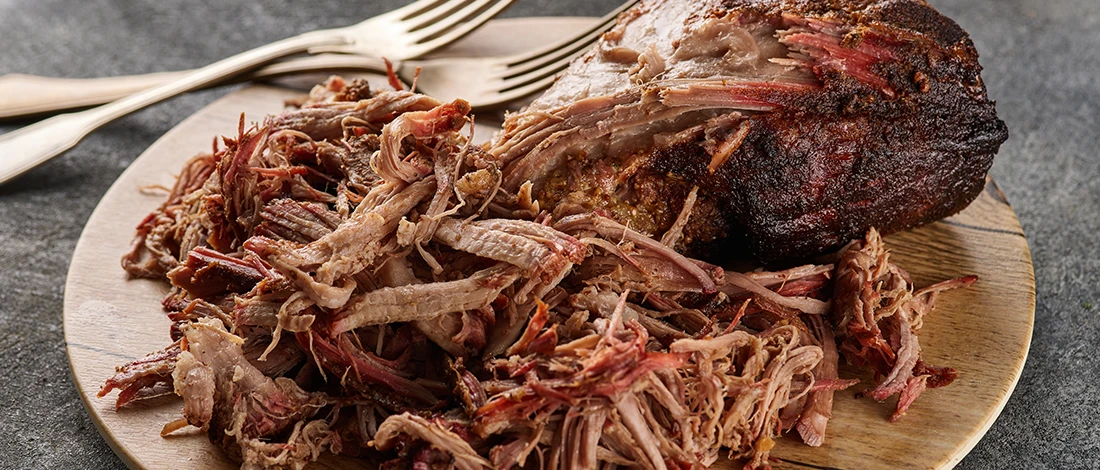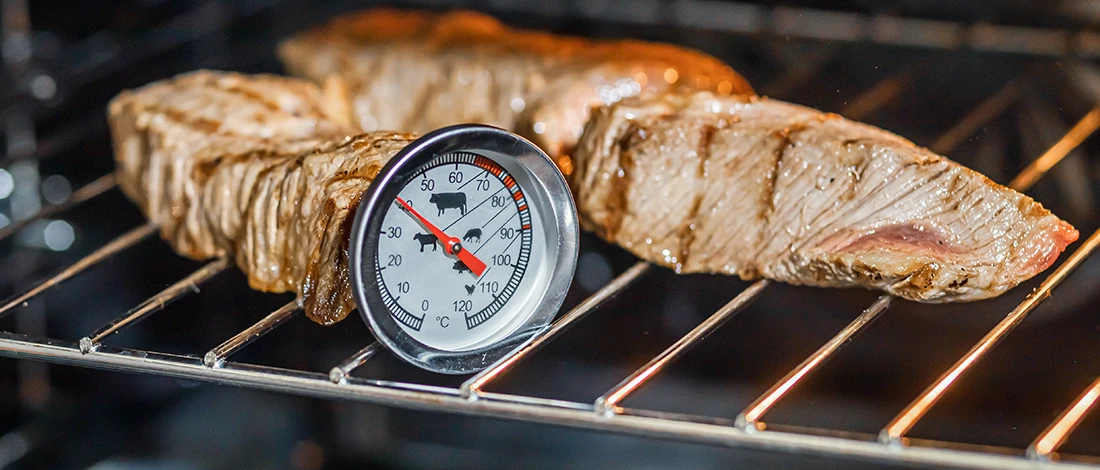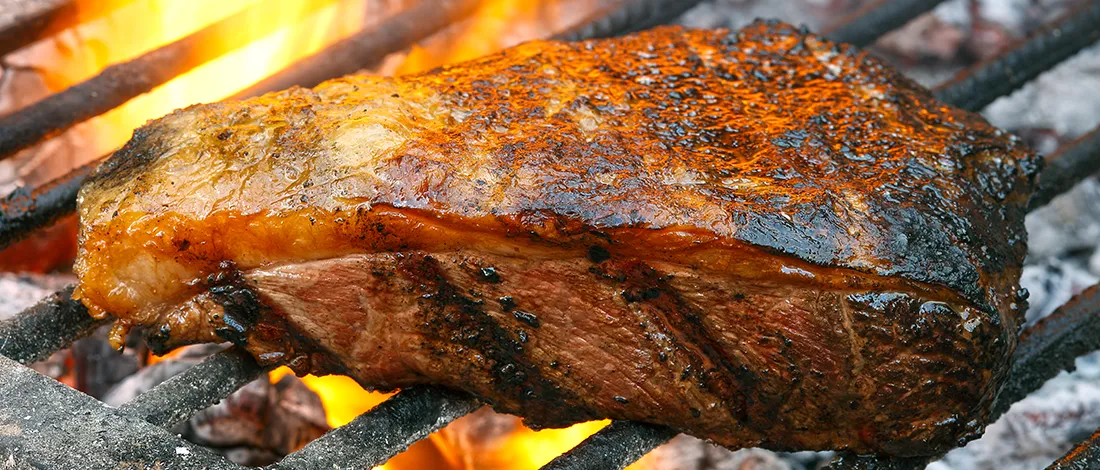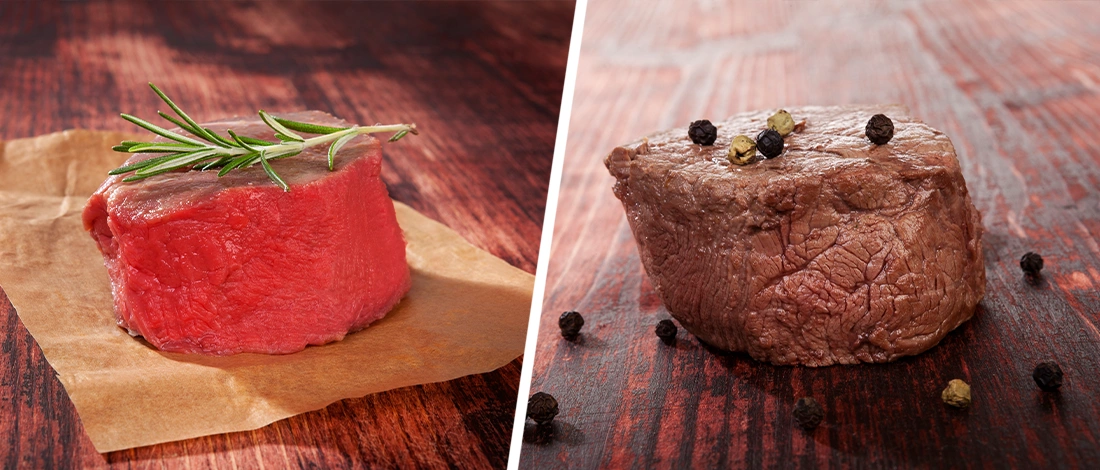Chicken thighs are my go-to for an easy and tasty weeknight dinner. They are juicy and soft on the inside and crispy on the outside when cooked correctly.
As someone who’s been on a carnivore diet for over five years, I’ve perfected the methods to check if chicken thighs are cooked properly.
Here’s how to check their internal temperature and ensure the best cooking results.
Quick Summary
- The safest internal temperature for a chicken thigh is 165°F.
- Because they have more connective tissue than other parts of the chicken, thighs are tastier when cooked to a higher temperature—175 to 180 F.
- Use an instant-read meat thermometer to check the internal temperature properly.
Ideal Chicken Thighs Internal Temp

It's mandatory to cook chicken thighs to the ideal internal temperature as this safeguards against foodborne illnesses you contract if you eat undercooked chicken.
According to the USDA, chicken, and poultry are safe to eat if cooked for at least 30 seconds to an internal temperature of 165 F [1].
"This is necessary for chicken since, at this temperature, even the most resilient salmonella microbes will be pasteurized"
- U.S Department of Health and Human Services
While 165°F is the safest internal temperature, I recommend cooking chicken thighs at 175 to 180°F because they're darker meat.
Thigh meat requires greater cooking temperatures than leaner, more tender chicken breasts because it has more connective tissue, which requires prolonged cooking at high temperatures to break down properly.
Dark meat will be made tender and juicy thanks to the greater temperature, but the flesh may continue to appear pink even at this higher temperature, unlike chicken breasts.
How To Check The Temperature of Chicken Thighs?
You should use an instant-read meat thermometer to check the temperature of chicken thighs.
An instant-read thermometer eliminates cooking uncertainty by providing precise information about what is happening inside your chicken instead of relying exclusively on cooking time or feel.
These are some pointers for measuring the temperature of dark meat:
- Put the thermometer into the thigh's thickest region of the boneless chicken thighs.
- Steer clear of the bones. A false reading will result from touching the bone. Keep your distance from the bone at least 1/4 inch for an accurate reading.
- For the thermometer to reliably read the meat's temperature chart, give it a few seconds (2–3 is preferable) [2].
Another option is a wireless thermometer with two probes. The probes can be left inside the meat while it cooks, making this option popular for grilling chicken thighs.
This lets you check the temperature without lifting the grill or smoker's lid.
Checking the Temperature Without a Thermometer

You can use visual indicators to tell when your chicken thigh is sufficiently cooked, even if you don't have a thermometer.
Chicken meat is usually done if its juices are clear and undercooked if reddish.
Cutting into the chicken is another way to check it. The chicken is likely done if the inside appears white, typically in breast meat.
However, chicken thigh meat can sometimes be pink even when cooked because of higher myoglobin levels [3].
How Long Does It Take to Cook Chicken Thighs?
It takes 40 to 50 minutes to cook chicken thighs when roasting at 350°F, 10 to 15 minutes per side on a grill set to 350°F, 30 to 50 minutes if you're pan-frying, and at least 4 hours on the low setting of the slow cooker.
These are only rough timings; the real cooking time will vary based on the thickness of the thighs and your kitchenware.
Larger or thicker chicken pieces typically take longer to prepare than smaller or thinner ones.
Also, boneless skinless chicken thighs cook faster than bone-in ones.
Related Articles:
Tips for Achieving Perfect Chicken Thighs Internal Temp

These simple tips will help you achieve that juicy, flavorful chicken perfection:
- Rest the chicken thighs: Avoid serving immediately after removing them from the heat so that the juices flow evenly throughout the chicken, giving your dish a softness and moistness that will make it unforgettable.
- Avoid overcooking: Use a meat thermometer to monitor the internal temperature of your chicken thighs to ensure they are precisely cooked and moist. Remove them from the heat source when they reach 165°F to avoid overcooking and drying up the meat.
- Try several cooking techniques: You can prepare chicken thighs using various methods, including baking, grilling, pan-frying, and braising. Try many approaches until you find the one that gives you the best results.
- Add moisture: Use a flavorful marinade or sauce as a basting agent to give more water to your chicken thigh so it stays juicy and delicious rather than dry.
FAQs
What's The Safe Temperature To Cook Chicken Thighs?
165°F is the minimum safe temperature to cook chicken thighs, according to the USDA. The meat is deemed safe at this temperature because all dangerous bacteria would have been eliminated.
What Internal Temperature Should You Cook Chicken Thighs To?
You should cook chicken thighs at 175°F as this is the best internal temperature to achieve the juiciest, most flavorful results.
Can I Eat Chicken Thighs That's Still Pink?
Yes, you can eat chicken thighs that’s still pink, so long as the internal temperature of the chicken reaches 165.
References:
- https://www.fsis.usda.gov/food-safety/safe-food-handling-and-preparation/food-safety-basics/safe-temperature-chart
- https://www.fsis.usda.gov/food-safety/safe-food-handling-and-preparation/food-safety-basics/kitchen-thermometers
- https://www.ncbi.nlm.nih.gov/pmc/articles/PMC4008748/







